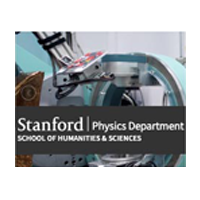
Applied Physics/Physics Colloquium: The Deep Synoptic Array: fast radio burst probes of the unseen universe
Hewlett Teaching Center, Rm. 201
Refreshments served in the courtyard between Varian and PAB at 4:30 p.m.
The origins of fast radio bursts (FRBs) at extragalactic distances remain shrouded in mystery. FRBs nonetheless form exquisite tracers of the contents and physical conditions of baryons along their sightlines. For example, FRBs are dispersed in intervening plasma columns, and these columns are typically dominated by gas around and in between galaxies. Much of the cosmic baryon content is locked in this hot (>10^6 K) and diffuse (<10^-3 cm^-3) phase, making it difficult to observe the processes whereby galaxies grow out of and impact their baryonic environments. The Deep Synoptic Array (DSA-110) radio telescope, nearing the end of construction at Caltech’s Owens Valley Radio Observatory, is pinpointing FRBs to host galaxies at a world-leading rate. I will present the first results from a DSA-110 FRB sample. These results shed new light on the origins of FRBs, highlighting the roles of multiple progenitor channels. Certain DSA-110 discoveries also enable tantalizing measurements of the content of the Milky Way CGM, and the ICM of nearby massive galaxy clusters. I will conclude by introducing the upcoming DSA-2000 radio camera, which will transform our access to the radio sky. With unmatched survey speed for continuum, spectral-line and short-timescale emission in the 0.7-2GHz band, the DSA-2000 will address frontier questions on our cosmic history, and in multi-messenger and time-domain astrophysics.